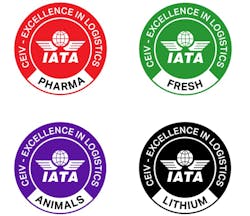
This article is part of a series explaining the various types of IATA CEIV certifications.
IATA CEIV certification involves a comprehensive assessment of an airline's operational processes, staff training programs and compliance with global safety regulations.
At least two staff members must pass a management course, then an assessor visits for three to four days to observe that current operations, processes and procedures are followed as described and conform to CEIV audit checklist requirements. The assessor then provides feedback, including a gap analysis report and list of areas that need improvement. The entity seeking certification responds with a corrective action plan and implementation data, which the assessor validates.
“There is a lot of preparation work involved in the certification process,” Yaniv Sorany, principal, IATA Certification, says.
Fortunately, he notes, the CEIV process is tailored to guide and support customers towards achieving success.
Sorany summarizes key aspects of the program. They include:
• Training: Equipping organizations with the knowledge to understand the standards and regulatory requirements, IATA also provides organizations with the skills.
• Assessment: GAP analysis identifies areas for improvement
• Certification: Awarded following the implementation of the findings, certification ensures that the standards are fully implemented.
• Continuous improvements: Periodic re-certification and spot checks are carried out to ensure the implementation of standard is on track.
“The main challenges for the majority of the companies in both the certification and re-certification process is to demonstrate continued improvements of the systems, products, processes, procedures and operations,” Sorany says.
CEIV Certification is valid for one to three years depending on the program. After this period, a recertification process ensures the organization's commitment to continuous improvement.
Additionally, Sorany says IATA may conduct spot checks, quality checks, and surveillance audits to maintain the highest quality standards among certified organizations.
Who has All Four CEIV Certifications?
Airlines that have all four CEIV certifications include Avianca Cargo, Cathay Pacific, Etihad Airways, Qatar Airways and Turkish Airlines.
Ramp Handlers with all four include HACTL and SAASA Ramp Services.
Between two locations (BRU and SIN – Singapore), dnata has all four.
About the Author
Rebecca Kanable
Assistant Editor
Rebecca Kanable, a veteran journalist, worked with Endeavor Business Media's aviation group from 2021 to 2024 as assistant editor of Airport Business, AMT and Ground Support Worldwide. She previously worked for various publications, including trade magazines and newspapers.
